Family : Labrisomidae

Text © Giuseppe Mazza

English translation by Mario Beltramini
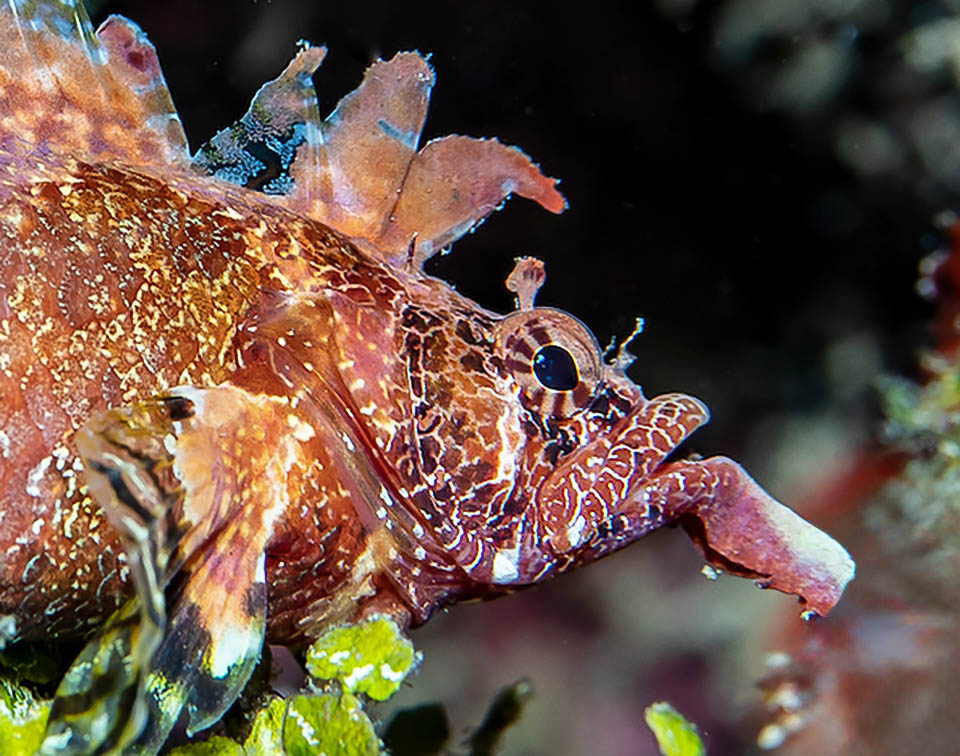
Called Goatee blenny, due to the fleshy extension of the lower jaw, Paraclinus barbatus is a less than 5 cm long Caribbean fish © Allison & Carlos Estape
Paraclinus barbatus Springer, 1955, known as Goatee blenny, belongs to the class of the Actinopterygii, the ray-finned fish, to the order of the Blenniiformes and to the family of the Labrisomidae that counts 16 genera and 123 species of benthic fish of modest size, from 1,7 to 35 cm of length, mainly present in the tropical Atlantic and Pacific oceans.
The name of the genus Paraclinus, created by Mocquard in 1888, originates formed by the Greek “para”, near, similar, and the genus Clinus, other Blenniiformes that looks like it, created by Cuvier in 1816. It’s matter, in short, of a fish evoking at first sight the Clinus.
The specific term barbatus, bearded in Latin, refers conversely to the unusual fleshy extension of the lower jaw similar to a goatee.
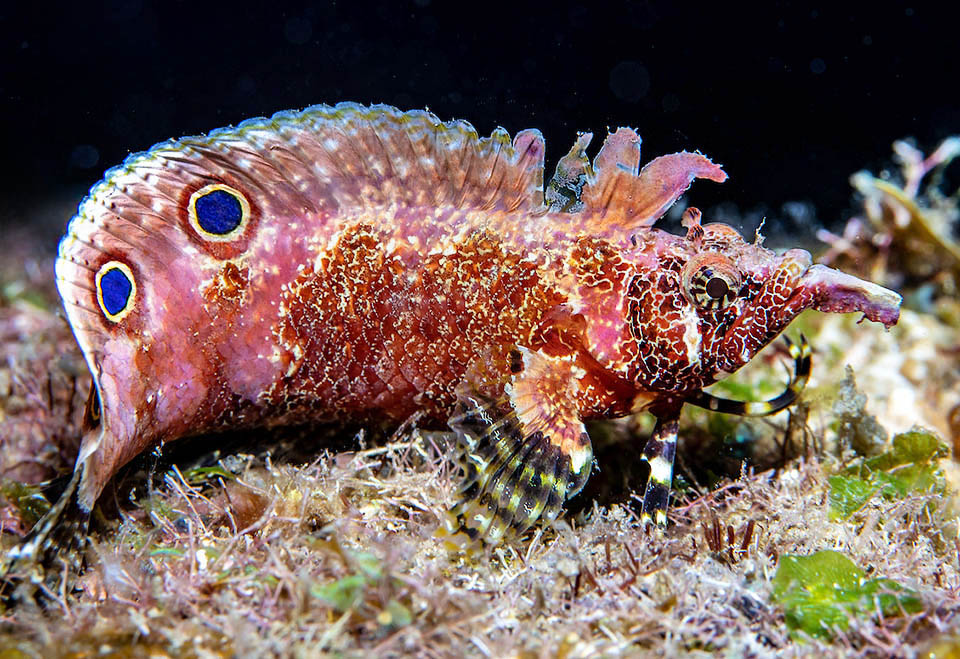
Lives camouflaged on sea beds. We note here the fake eyes on the ample dorsal fin and near the head, after the pectorals, the odd pelvic fins seem like slender legs © Allison & Carlos Estape
Zoogeography
Paraclinus barbatus is a fish present in three Caribbean zones: From Bahamas and Cuba to the Virgin Islands, from Belize to the Honduras Bay Islands; and in Colombia.
Ecology-Habitat
It is found along the coasts, mainly associated with the coral reefs, between 12 and 50 m of depth, but lives also on rocky seabeds rich in encrustations and weeds.
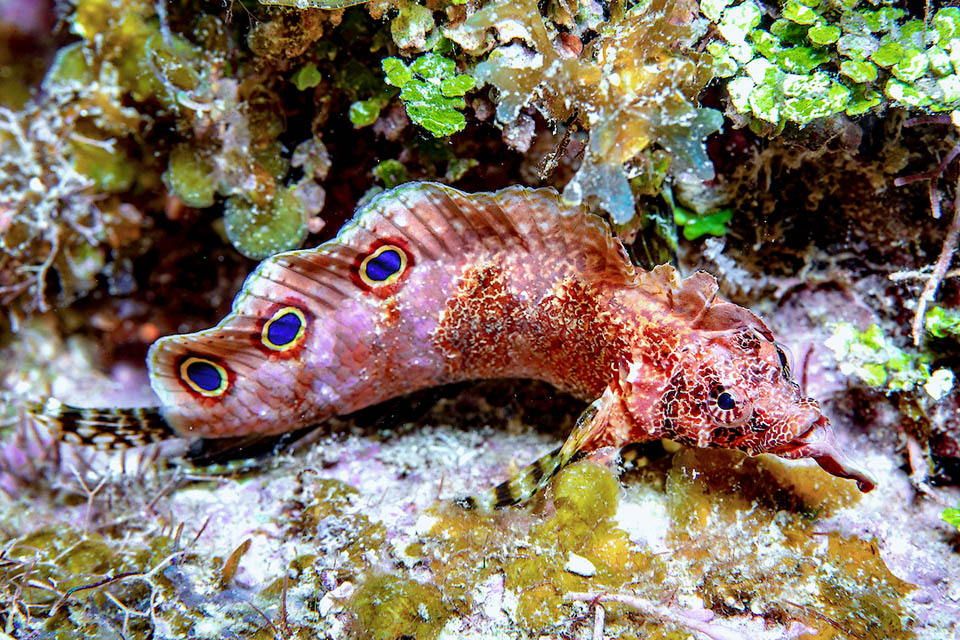
It has several teeth for seizing and nibbling small benthic invertebrates but due to the strong mimicry and the size little is known of its biology © Allison & Carlos Estape
Morphophysiology
Paraclinus barbatus reaches the length of 3,5 cm, and some talk of 5 cm, but it is usually smaller. The long body, with blunt snout, presents cycloid scales and immediately catches the eye with the characteristic barbel on the tip of the chin.
The nostrils are simple tendrils, but those close to the eyes are shaped like a paddle with small rounded protuberances at the apex. The mouth is equipped on the outer side of the jaws with teeth similar to canines or incisors, relatively big, followed by others, tiny, present also on the palate, inside the mouth.
The operculum ends on the top with a spiny tip under the showy notch of the dorsal fin between the third and the fourth ray.
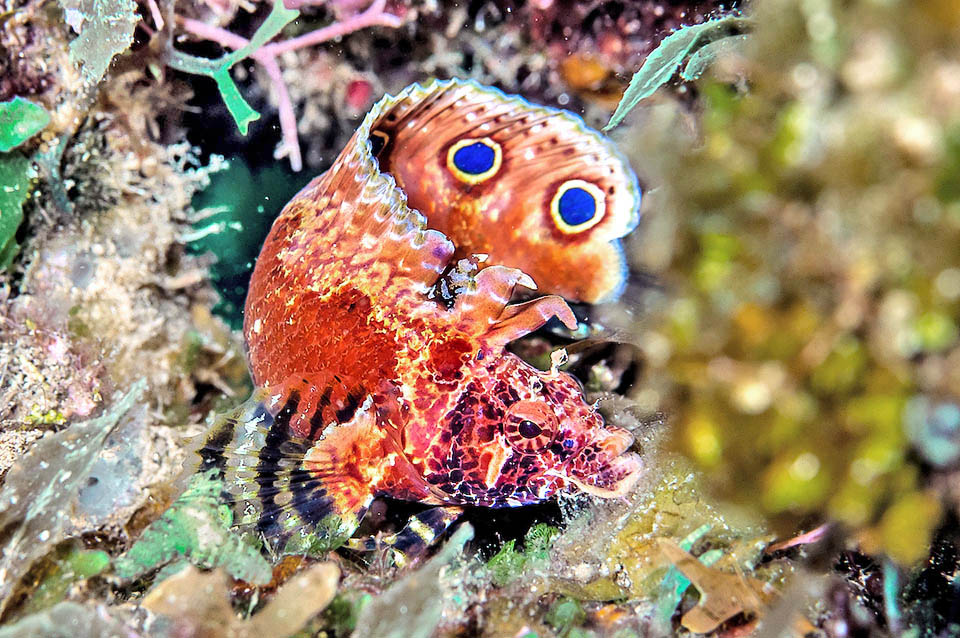
Seen this way, with two big fake owl eyes, some predator might think to have in front a much bigger fish and thus abandoning the meal © Allison & Carlos Estape
This, as often occurs for the Labrisomidae, does not have soft rays but 28-18 flexible spines.
The anal fin counts 2 spiny rays and 19-20 soft; the pectorals 13 unarmed rays and the pelvic ones, inserted in front of the pectorals, 1 spine and 2-3 unarmed rays. The almost truncated caudal fin is white with black bands; the pectorals and the pelvic are yellow with 3 black bands; the dorsal, that fades upward from orange to white, displays two showy blue ocelli surrounded by yellow and red rings. Three big eyes that confuse the predators and the modern cameras of the divers with ocular recognition.
For the rest, the marbled livery, extremely mimetic, is more or less reddish, tending to a dull salmon colour or a purplish red with shaded light spots. The upper part of the barbel is whitish and we note a white stretch on the inferior edge of the preoperculum. The iris, orange red, has black radial lines.
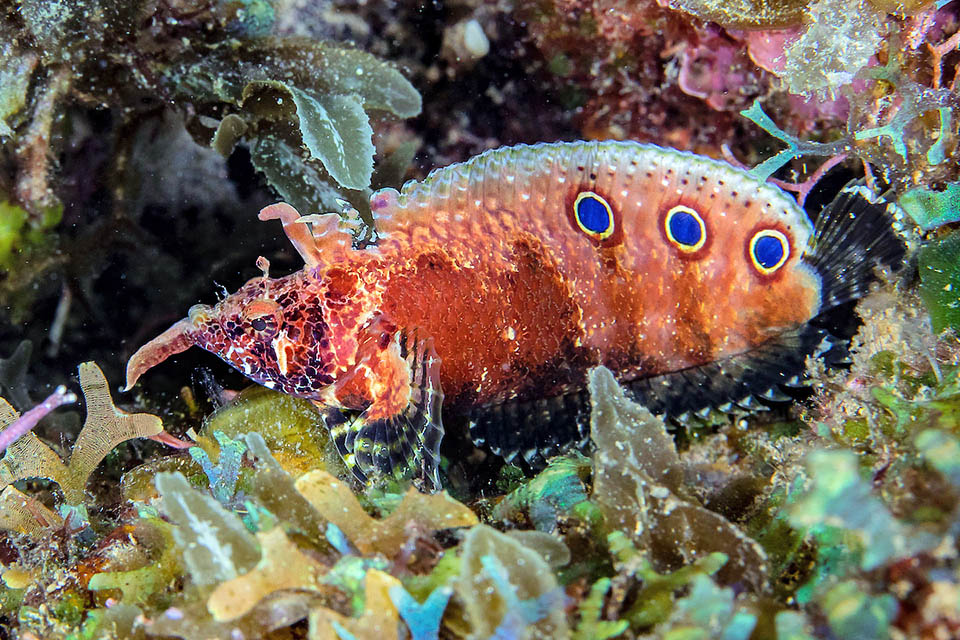
Not even man threatens it. The fishing vulnerability index is at lowest, and considering also its vast range Paraclinus barbatus is not an endangered species © Allison & Carlos Estape
Ethology-Reproductive Biology
Paraclinus barbatus feeds on larvae and on small benthic invertebrates.
The populations trend, the resilience and the reproductive modalities are little known, but the fishing vulnerability of the Goatee blenny, very low, marks only 10 on a scale of 100, and even if the geographical distribution appears disjointed, the same is however ample, and in some locations it is a common fish.
Since Paraclinus barbatus therefore appears as “LC, Least Concern” in the IUCN Red List of the endangered species.
→ For general information about FISH please click here.
→ For general information about BONY FISH please click here
→ For general information about CARTILAGINOUS FISH please click here.
→ To appreciate the BIODIVERSITY of BONY FISH please click here.
→ To appreciate the BIODIVERSITY of CARTILAGINOUS FISH please click here.
